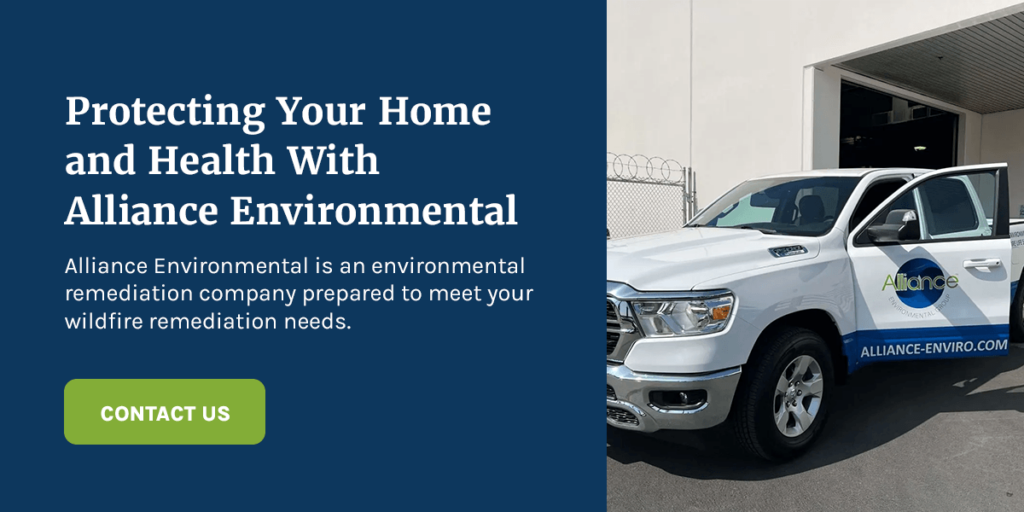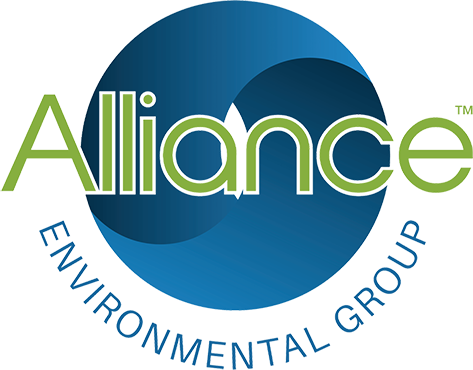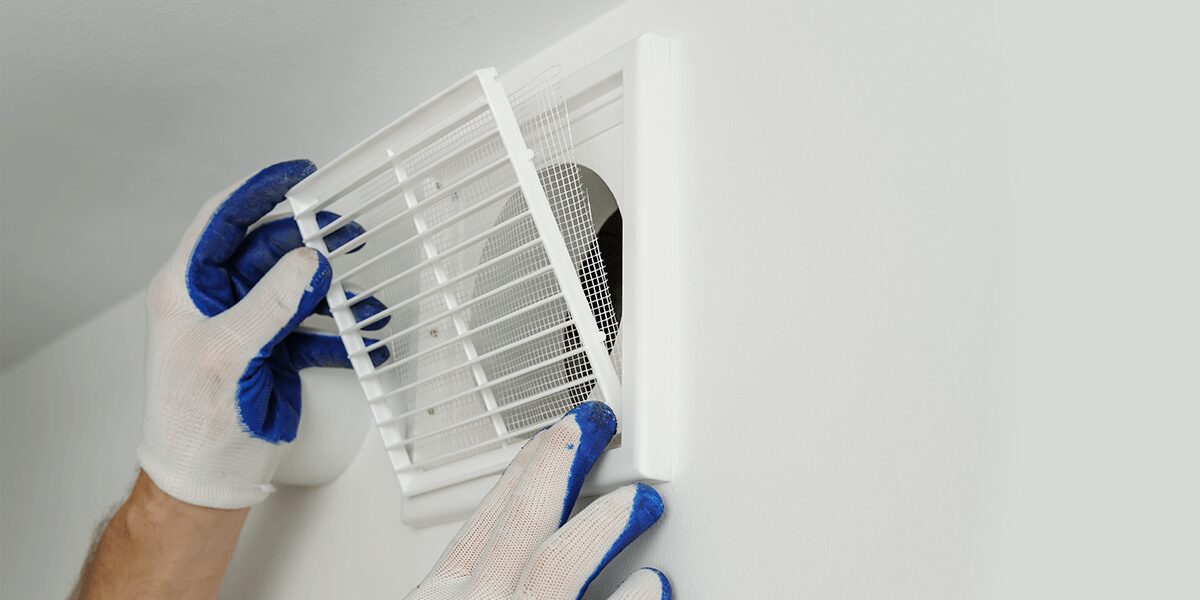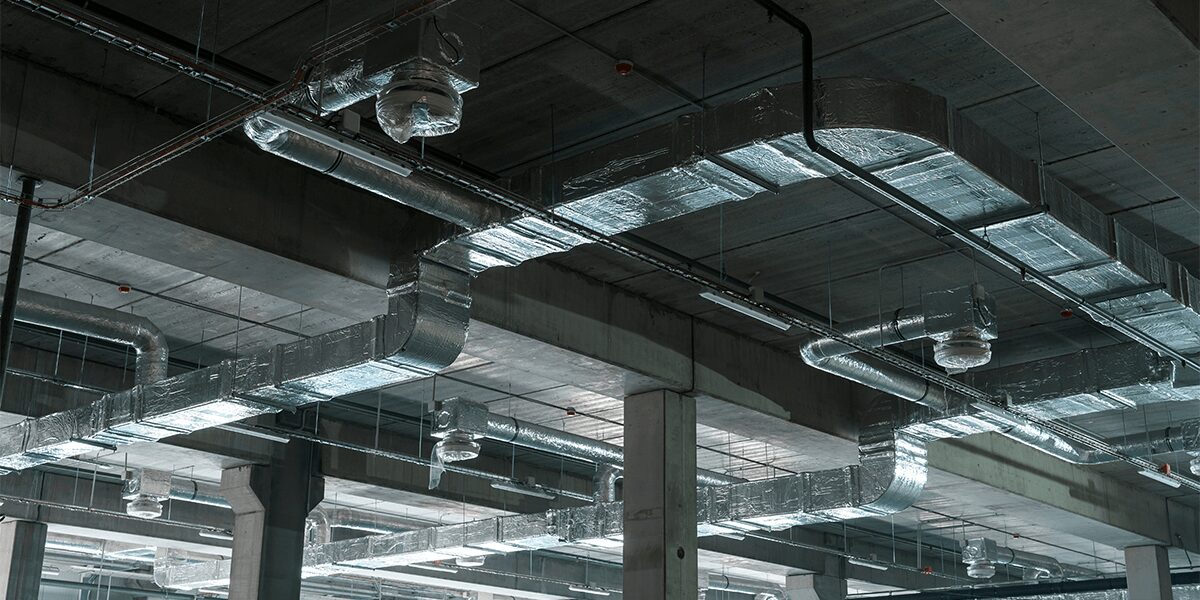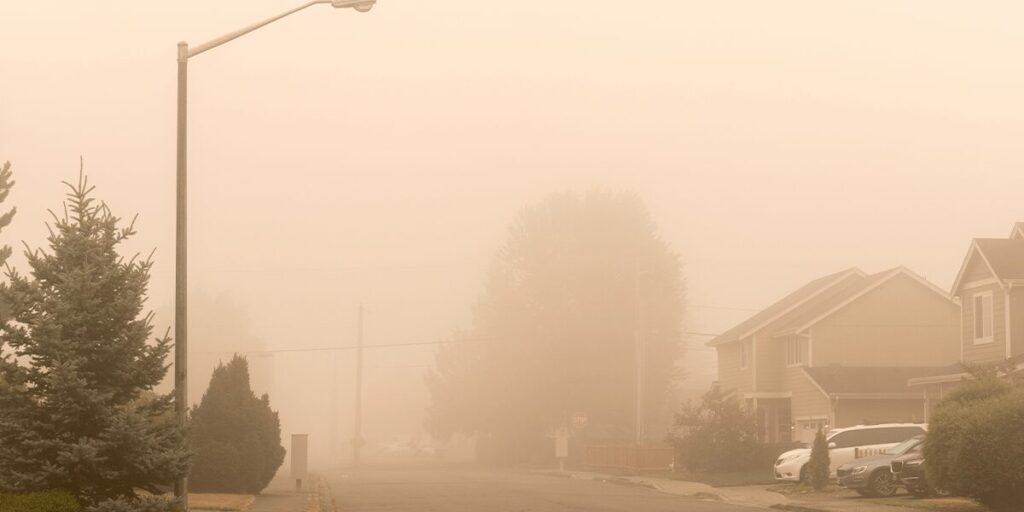
Wildfires can break out for several different reasons, from unpreventable natural causes like lightning to preventable causes stemming from human error. While there are measures you can take to protect your property from flames, it’s also essential to protect your home from the impacts of the smoke, even if you don’t live near the active fire.
Wildfire smoke is a complex combination of gases like carbon monoxide and tiny particles from burning plants, trees, buildings and other matter. Because wildfires devour everything in their path and release smoke from the ruins, the gas in this smoke can also contain harmful chemicals, sulfur dioxide, metals and other pollutants, leading to air pollution and associated health risks.
Understanding the Risks of Wildfire Smoke on Your Health
While the impacts of wildfire smoke are more prominent for those who live near active fires, the smoke from these disasters can travel over hundreds of miles, negatively impacting the health of residents in different ways. The health impacts of wildfire smoke exposure can vary from mild to severe. Inhaling this smoke for prolonged periods can worsen symptoms, even in healthy individuals.
The respiratory health effects associated with wildfire smoke range from bronchitis and reduced lung function to an increased risk of developing or worsening asthma. Respiratory tract irritation can cause wheezing, shortness of breath, stubborn phlegm and coughing as mild to moderate symptoms. When it comes to cardiovascular health, wildfire smoke could lead to heart attack, heart failure and stroke.
Does Wildfire Smoke Affect Indoor Air Quality?
The tiny microparticles in this smoke can enter a home through natural ventilation like open doors and windows and HVAC systems with a fresh air intake function. Wildfire smoke can even seep into your home through the smallest of openings, like cracks and spaces between doorframes and window frames, to contaminate indoor air. As a result, even those who stay indoors during a wildfire happening several miles away could be at risk of various health effects.
How to Keep Wildfire Smoke out of Your House
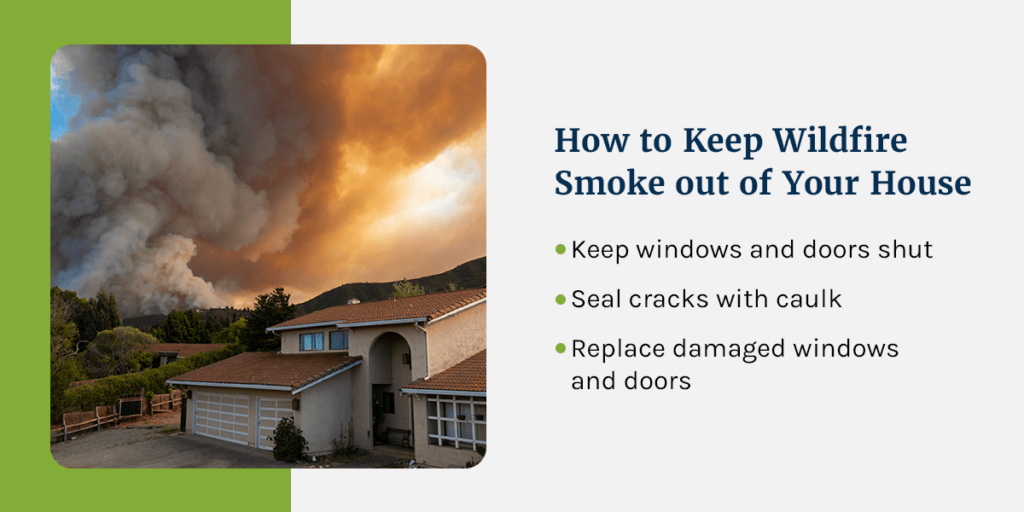
Whether you live in an area prone to wildfires or in a surrounding area that may be affected by the smoke, you can try many strategies to keep your home sealed properly and limit your exposure to smoke. Specifically, maximizing insulation is the most practical way to seal a home from smoke. Here’s how to keep wildfire smoke out of a house:
- Keep windows and doors shut: The quickest way wildfire smoke can enter your home is through large openings like windows and doors. Close and lock all of your windows and doors to prevent smoke from getting inside.
- Seal cracks with caulk: Move through your home, assessing windows, walls and doors to look for cracks and crevices. Seal these areas with caulk to keep outdoor pollutants from entering.
- Replace damaged windows and doors: If any of your windows or doors are broken or outdated and tend to let in outdoor air, replace them with new, higher-quality alternatives.
The attic, ducts, crawlspace, exterior walls, ceiling and basement are all areas of a home that require insulation. Insulating these areas can prevent smoke from entering while also improving indoor air quality and temperatures.
When wildfire season is approaching, professional insulation removal and replacement services can prepare your home. Alliance Environmental will assess your home to replace insulation in all of the most important areas.
Maintaining Healthy Indoor Air Quality During Wildfires
Once you’ve sealed your home from wildfire smoke, the next measure in protecting your health is to improve and maintain your house’s indoor air quality. Even though little or no smoke will enter a properly insulated home, if air is not in circulation, it can become stale, and indoor pollutants can become a problem. While using overhead fans and standing fans can help, these measures are also recommended for improving indoor air circulation:
- Use an air purifier: While windows and doors are shut, use an air purifier to keep indoor air clean. An air purifier will filter indoor air to remove pollutants and boost air quality.
- Set your HVAC system to cycle fresh air: Recirculating air will keep contaminants from smoke from your home. This function recycles the air in your home. Otherwise, seal the outdoor intake damper to prevent smoke from entering the vents.
- Don’t vacuum and limit indoor pollutants: Vacuuming might seem unrelated, but vacuums release dust and debris back into the air, worsening indoor air quality during a wildfire when windows and doors should stay shut. Do what you can to limit other activities that can impact indoor air quality, such as cooking with your stove.
If you live close to an active wildfire, you can create a clean room in your home. Choose one room of your home and keep it free of activities that release indoor pollutants. Keep the windows and door closed, and place an air purifier in the room. It’s easier to maintain indoor air quality in smaller spaces.
The Importance of Regular HVAC Maintenance
Regular HVAC system maintenance is essential throughout the year, and it’s especially important for improving indoor air quality during wildfires. Ongoing maintenance is the only way to ensure your HVAC system can maintain quality indoor air. Wildfire smoke can increase the need for maintenance and repairs, as pollutant particles can build up in vents and pipes.
As part of your preparation for wildfire season, be sure to schedule HVAC maintenance and repairs with Alliance Environmental — we can keep your system operating in peak condition so it performs when you need it most.
Post-Wildfire Recovery and Cleanup
From smoke stains on walls to lingering odors, wildfire smoke can cause damage to your home. Beyond impacting your HVAC system, this smoke can seep into insulation, carpeting and even furniture, intensifying poor indoor air quality.
If your home has been engulfed by wildfire smoke, it’s essential to remove soot and smoke from walls, floors and furniture using a gentle soap detergent. You must also wash linen and window treatments and be sure to wipe and disinfect all surfaces in your home.
Wildfire smoke can linger for weeks following an active fire. Your proximity to the fire and the extent of the fire will determine how long the smoke will stay in the air. Alliance Environmental offers reliable environmental remediation services that may be beneficial to you after a wildfire.
Protecting Your Home and Health With Alliance Environmental
Alliance Environmental is an environmental remediation company prepared to meet your wildfire remediation needs. We offer indoor air quality services, insulation removal and replacement, dust removal, mold removal, and other services that can restore and safeguard your home from the devastating impacts of wildfire smoke.
With over two decades of experience and thousands of satisfied customers, Alliance Environmental is an industry leader ready to assist homes across the Western United States in California, Arizona, Nevada and Washington. Contact us today for a quote, or learn more about our residential services.
